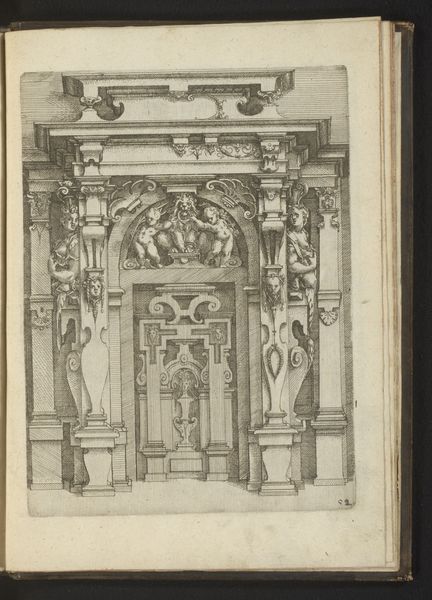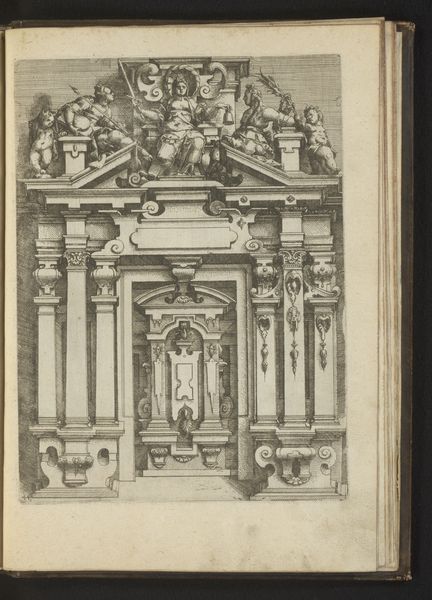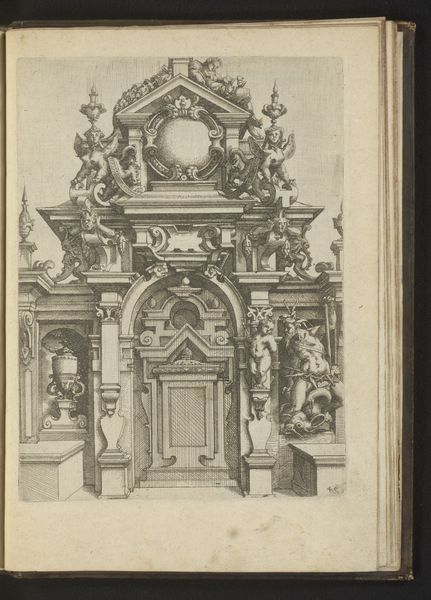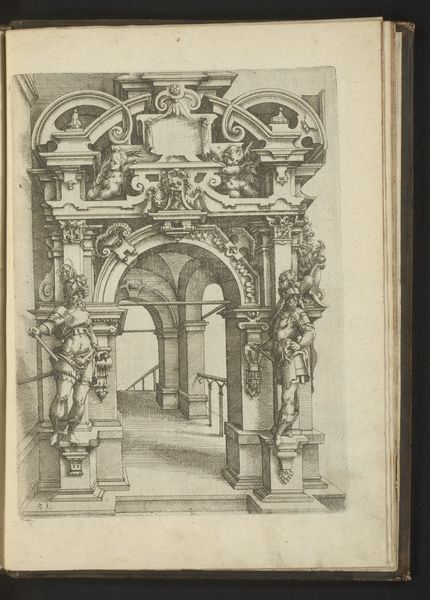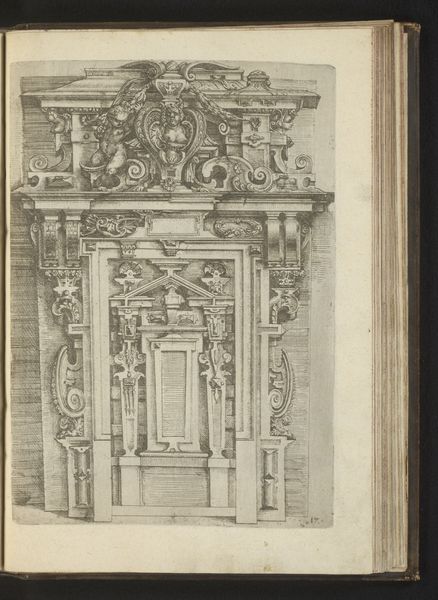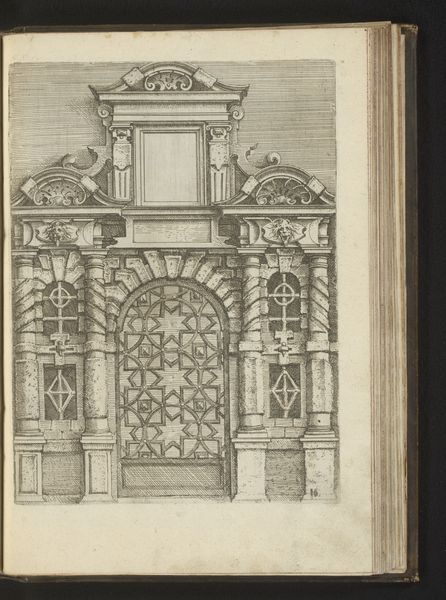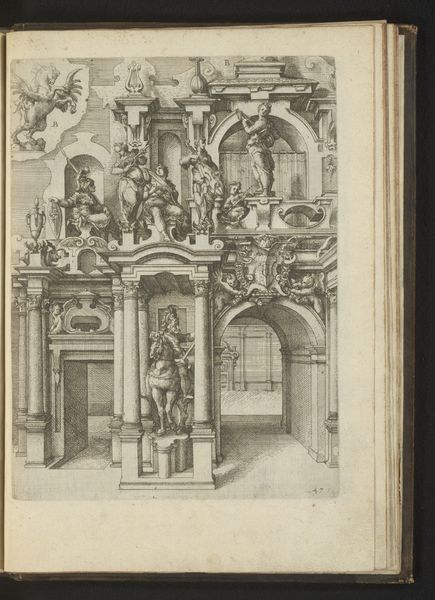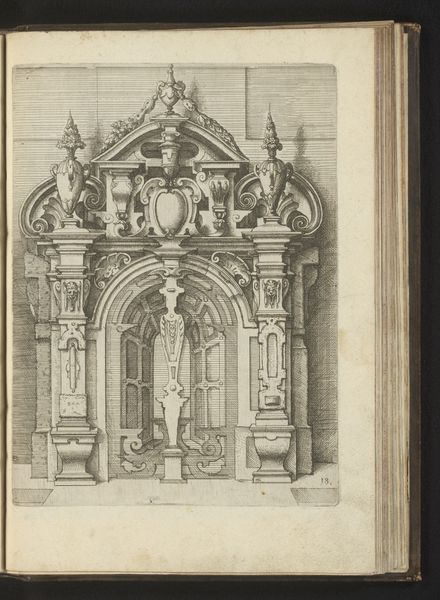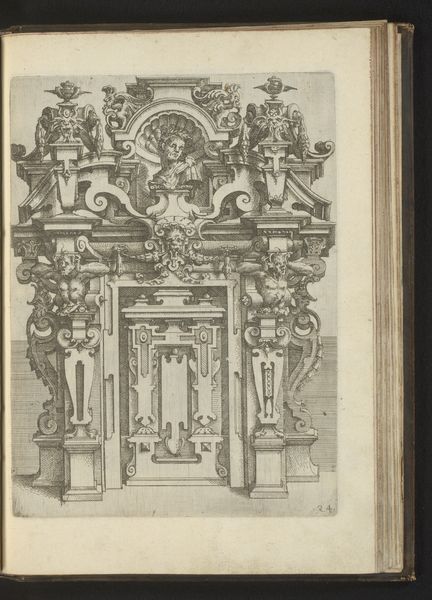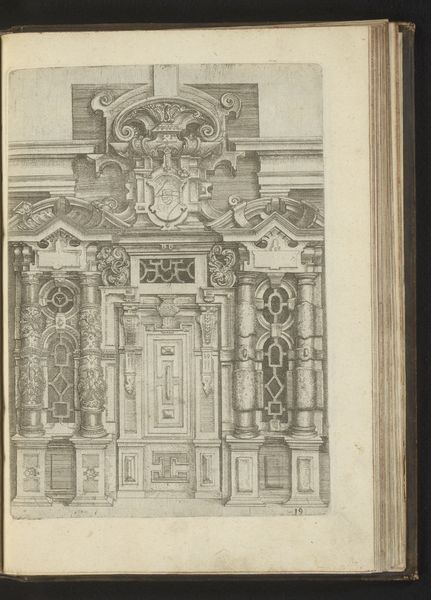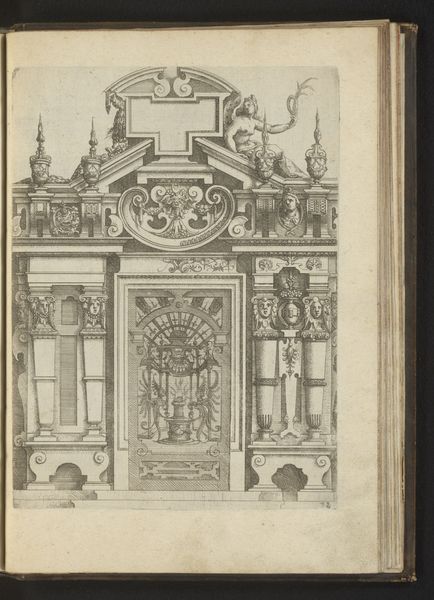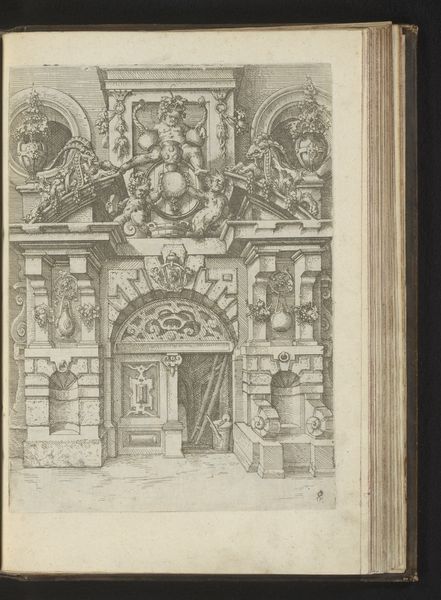
Portaal met links en rechts verschillende ornamenten, cartouches, een putto en Cupido met zijn pijl en boog in de aanslag 1593 - 1595
0:00
0:00
drawing, engraving, architecture
#
drawing
#
baroque
#
11_renaissance
#
northern-renaissance
#
engraving
#
architecture
Dimensions: height 246 mm, width 186 mm
Copyright: Rijks Museum: Open Domain
This print was created by Wendel Dietterlin, a late 16th century artist, using etching, a printmaking technique that employs acid to corrode the unprotected parts of a metal surface to create a design in the metal. Look closely at the design of this architectural portal. The image is made from multiple lines, cross-hatching, and intricate details that give the print depth and dimension. The etching process allowed Dietterlin to achieve fine lines and details, crucial for representing the elaborate ornamentation and classical motifs, like putti and cartouches, that adorn the portal. The use of etching highlights the value placed on skilled craftsmanship and artistic ingenuity during the Renaissance. The labor-intensive process underscores the work involved in translating an architectural vision into a tangible, reproducible form. The resulting prints could then be widely disseminated, influencing architectural design and taste across Europe. This print blurs the lines between art, design, and craft, inviting us to consider how reproductive technologies have shaped our understanding of creativity and artistic production.
Comments
No comments
Be the first to comment and join the conversation on the ultimate creative platform.
